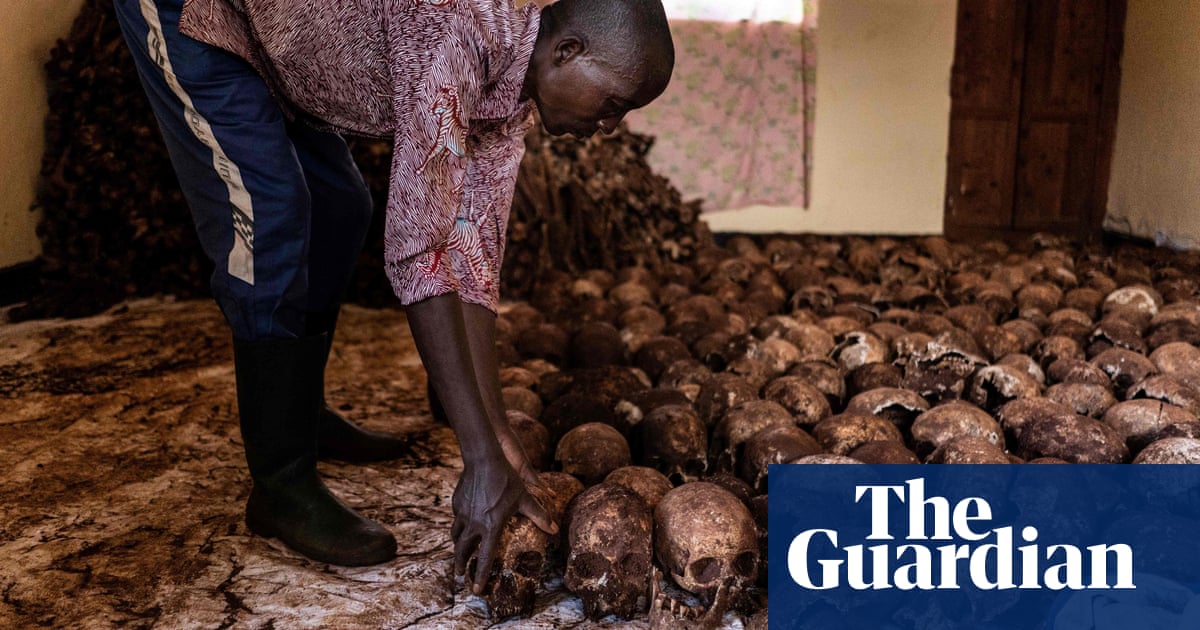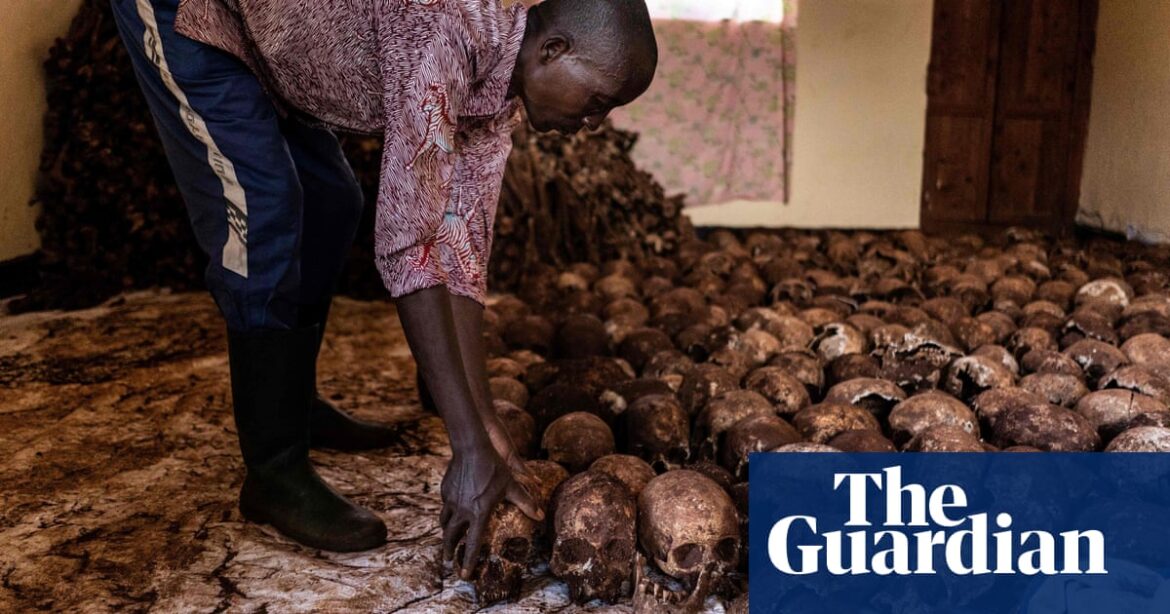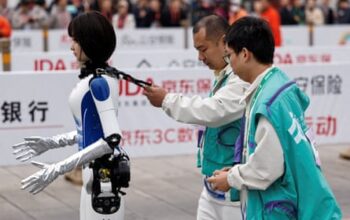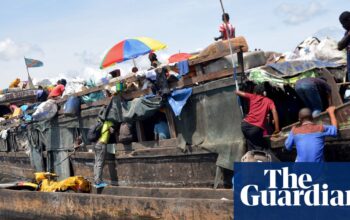
The war crimes tribunal for Rwanda has accounted for the last remaining fugitives indicted for genocide, bringing to an end the court’s 29-year mission to deliver justice for the 1994 slaughter that killed more than 800,000 Rwandans.
The historic moment passed without drama, not with an arrest or the exhumation of a body, but in a video conference on 30 April between the tribunal’s prosecutor, Serge Brammertz, and the two leaders of its fugitive tracking team, dedicated to resolving the cold cases left in the wake of the genocide.
At some point in that conversation, the three agreed they had finally accumulated enough evidence to satisfy the court that the last two suspects they had been tracking were long dead and were lying in unmarked graves in different corners of central Africa.
Those two final names crossed off the tribunal’s list of 92 indictees were Charles Sikubwabo and a restaurateur known by just one name, Ryandikayo. They were influential local organisers in Rwanda’s Kibuye prefecture, leading mobs of the murderous Interahamwe Hutu militia responsible for the mass killing of Tutsis. Both had been charged with genocide and crimes against humanity.
“This is a tangible demonstration that the international community can ensure accountability is achieved, no matter how long it takes,” Brammertz said.
Closing their cases does not simply mark the completion of the tribunal’s work. It is also the culmination of a broader experiment in international justice for mass atrocities going back more than three decades to the creation in 1993 of its sister court, the international criminal tribunal for the former Yugoslavia (ICTY). The international criminal tribunal for Rwanda (ICTR) was created two years later.
Both were ad hoc courts given mandates by the UN security council, and both proved tenacious and successful beyond all expectations. The ICTY accounted for all its 161 indictees by 2011.
As they approached the end of their missions, the two tribunals were folded into one, the awkwardly named “international residual mechanism for criminal tribunals”, first established in 2010 to handle outstanding court hearings and to pursue the last fugitives.
The striking effectiveness of the twin tribunals had fuelled optimism in the late 1990s that impunity for genocide and other mass crimes could finally be challenged and pushed back, and the momentum they created led to the establishment in 2002 of a permanent institution to investigate and judge war crimes, the international criminal court (ICC).
The ICC has struggled, however. Unlike the two ad hoc courts, it does not have the backing of the US, Russia or China, and it has focused until recently on African cases. The court is facing a critical test as it weighs charges and arrest warrants for Israeli and Hamas leaders, in the midst of the Gaza war and under heavy political pressure from all sides.
After Brammertz was made prosecutor of the residual mechanism in 2016, he brought with him key members of the tracking team that had helped hunt Bosnian war criminals like Radovan Karadžić and Ratko Mladić, to train their skills on the pursuit of the last eight Rwandan suspects still at large.
They got rid of a network of paid informants who were providing a constant drip feed of false leads, and rebuilt their files on the fugitives virtually from scratch, delving deep into the minutiae of witness interviews and open source data.
“Starting from the minute their feet left the Rwandan border in 1994, it is about source exploitation and investigation and witness interviewing until we got to the last piece of the puzzle,” said Ewan Brown, a former British army officer who is co-leader of the tracking team.
The eight-person team had made Sikubwabo and Ryandikayo their final targets because they were relatively small cogs in the killing machine unleashed in 1994, and because their trail had gone particularly cold. The trackers had instead made a priority of looking for the warlords of the Rwandan genocide, like Protais Mpiranya, once the chief of the presidential guard, whose grave was found in Zimbabwe in May 2022. Precedence was also given to suspects thought to be still alive, such as Fulgence Kayishema, a former police chief arrested in May 2023 living under a false name and working as a security guard in the vineyards outside Cape Town in South Africa.
Sikubwabo was a small town mayor while Ryandikayo was a restaurant manager – minor characters in provincial life until they made themselves arbiters over life and death when the bloodletting began.
Sikubwabo helped orchestrate one of the worst massacres of the genocide, the slaughter of Tutsis who had taken refuge in the compound around a Seventh Day Adventist church at a place called Mugonero. Seven Tutsi pastors appealed to him on 15 April 1994. “We wish to inform you that we have heard that tomorrow we shall die with our families,” they wrote, not suspecting that Sikubwabo, and the Hutu pastor at Mugonero, were the ones organising the slaughter, which took place the next day. They personally drove a convoy carrying Interahamwe killers armed with guns and machetes to Mugonero. About 12,000 children, women and men were killed on the spot, and in the months that followed, Sikubwabo led search parties to root out Tutsi survivors in his fiefdom and murder them.
Ryandikayo took part alongside him in many of the massacres that followed. Tens of thousands died in the area, including a 12-year-old Tutsi girl by the name of Mukanyemera, whom Ryandikayo personally bludgeoned with a club and then cut to pieces with a machete.
At the end of the 100-day genocide and the fall of the Hutu government in Kigali, the two men fled to camps in what was then Zaire, now the Democratic Republic of the Congo. From there, Riyandikayo went to the capital, Kinshasa, via the smaller Republic of Congo, while Sikubwabo made his way through to the Republic of Congo and Central African Republic before arriving in Chad in 1997.
Neither man had been heard of or seen for years. Their friends and relatives insisted they were dead, but proving it took years. In neither case was it feasible to go looking for a body and DNA. The N’djamena cemetery where Sikubwabo was buried in 1998 had been repeatedly flooded since then. Riyandikayo is thought to have died of unspecified disease in Kinshasa, also in the late 1990s. His place of burial was never clear.
Ultimately, the proof that both fugitives were dead was built on multiple detailed interviews that were checked against other witness accounts and open source information. A final piece of corroborating evidence was pinned down in late April: an interview with an eyewitness who had attended Sikubwabo’s funeral in the Chadian capital.
It was that interview that took the investigation over the finish line, and led to the decision to close the two cases on the 30 April video call between Brammertz and the two leaders of the tracking team, Brown and Kevin Hughes, chief of staff in the prosecutor’s office.
“A lot of people never believed something like this was possible – the investigations, the prosecutions and finding the fugitives,” Hughes said. “I hope people walk away from this experience with the fact that all this is very possible when you get a good bright group of dedicated people together, even a small little team. It’s amazing what people can do.”
Brown said one of the lessons of the tribunal’s success was the sheer relentlessness of the trackers.
“It would have been easy to have forgotten about Ryandikayo, it would have been easy to have forgotten about Sikubwabo but the fact is, if you don’t stick with it, if you don’t find these people, there are costs,” he said.
“The issue is predominantly for the victims and their traumas to be kept in the public mind,” Brown added. But he also pointed to the importance of international justice in anchoring the history of the genocide, as a bulwark against denial.
“Some of these fugitives and their supporters have peddled narratives that the genocide didn’t happen,” he said.
With the political and resource constraints facing the ICC, the era of the Yugoslav and Rwandan tribunals is beginning to look like a brief golden age, raising hopes of bringing justice and accountability for the worst crimes known to humanity – hopes that are now fading.
“In a world where international justice is really not doing well, it is a good feeling for us to be able to say: mission accomplished,” Brammertz said. “At least it’s accomplished for our fugitives, but this story is not over.”
The international tribunals were set up to bring the main protagonists to justice, but there are still another thousand lower level war crimes suspects wanted by the Rwandan authorities.
On their 30 April video call closing the tribunal’s cold cases, Brammertz Brown and Hughes said they hardly paused to mark the moment, but instead moved straight on to discussing how to help Rwanda’s prosecutor general track down the génocidaires still at large.
“We already found indications after a few weeks of research, where we could locate a number of individuals who are hiding under fake identities in third countries, and we have already started approaching these third countries,” Brammertz said. “There is work still to be done.”
Source: theguardian.com



